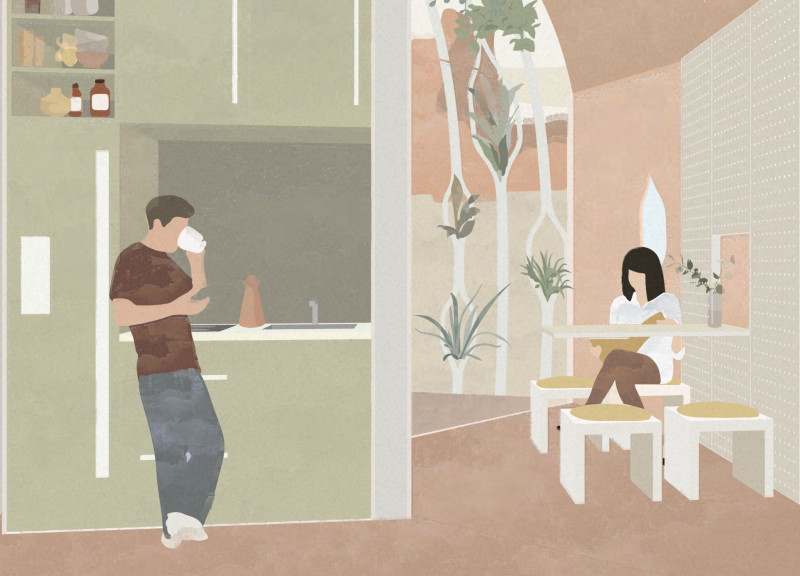5 key facts about this project
The Symbiotic Dome serves as an exploration of adaptability and sustainability within a compact living space. Its design prioritizes ecological balance while also considering the needs of its occupants. The overall approach focuses on creating versatile environments where spaces can easily change based on different activities and daily routines. The concept emphasizes the importance of open areas combined with efficient use of materials to foster a harmonious relationship between people and their living surroundings.
Design Concept
The layout features movable walls that allow for a variety of configurations. Occupants can create distinct rooms for privacy or open up the space for communal gatherings. This flexibility supports various activities, enhancing how users interact with their environment. The design invites a rethinking of traditional living spaces by offering dynamic options that adjust to individual preferences and needs.
Terrace Integration
An outdoor terrace forms an essential part of the design, set apart from the surrounding environment by a grid made from algae-based bio-plastic. This feature adds visual interest while also functioning as a hydroponic garden for small plants. By integrating nature into the living space, the design showcases the potential benefits of greenery, promoting health and well-being among occupants.
Materiality and Construction
The materials chosen reflect a dedication to sustainability and efficiency. The walls are created using a 3D printing process that employs raw earth, providing strength while minimizing environmental impact. Mycelium is incorporated for insulation, both thermal and acoustic. Furthermore, a rainwater collection system installed on the roof supports responsible water management, while algae-filled photobioreactor cells provide an innovative energy solution, functioning similarly to conventional solar panels.
Functional Systems
A significant aspect of the design involves the algae photobioreactor system, which includes a growth tank for harvesting algae and a compressed air inoculation system. This setup efficiently recycles water, utilizing grey water to minimize waste generation. The fast growth rate of the algae enhances energy production, allowing the structure to maintain its operations sustainably. Finally, the building method involves 3D printing technology, which reduces typical construction waste.
The dome's outer layer made from algae bioplastic adapts to various environmental conditions, ensuring the structure remains protected while supporting ecological practices.



















































